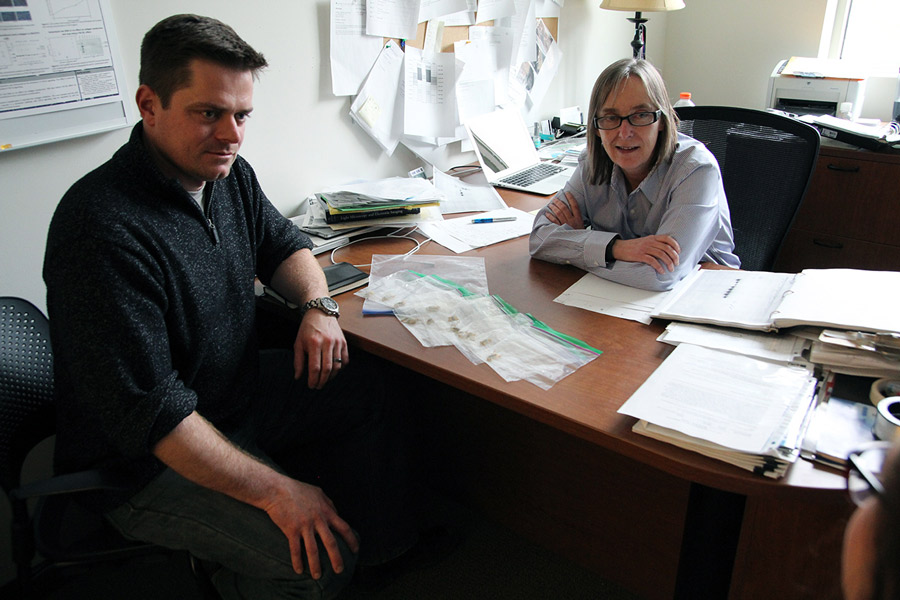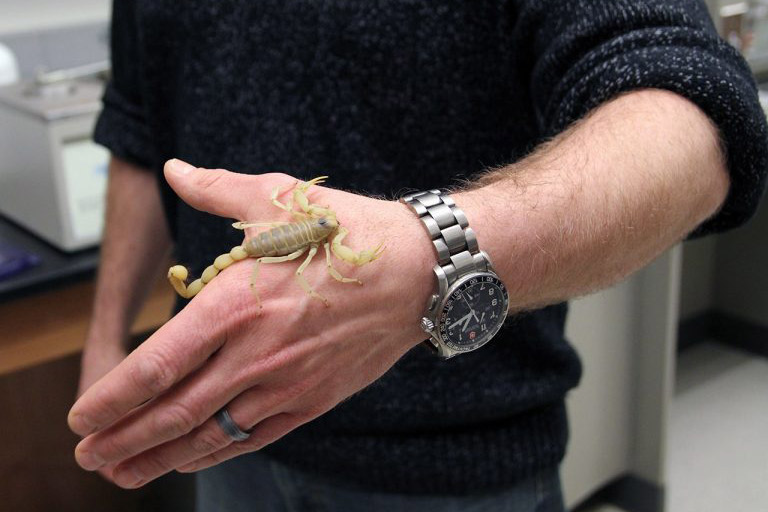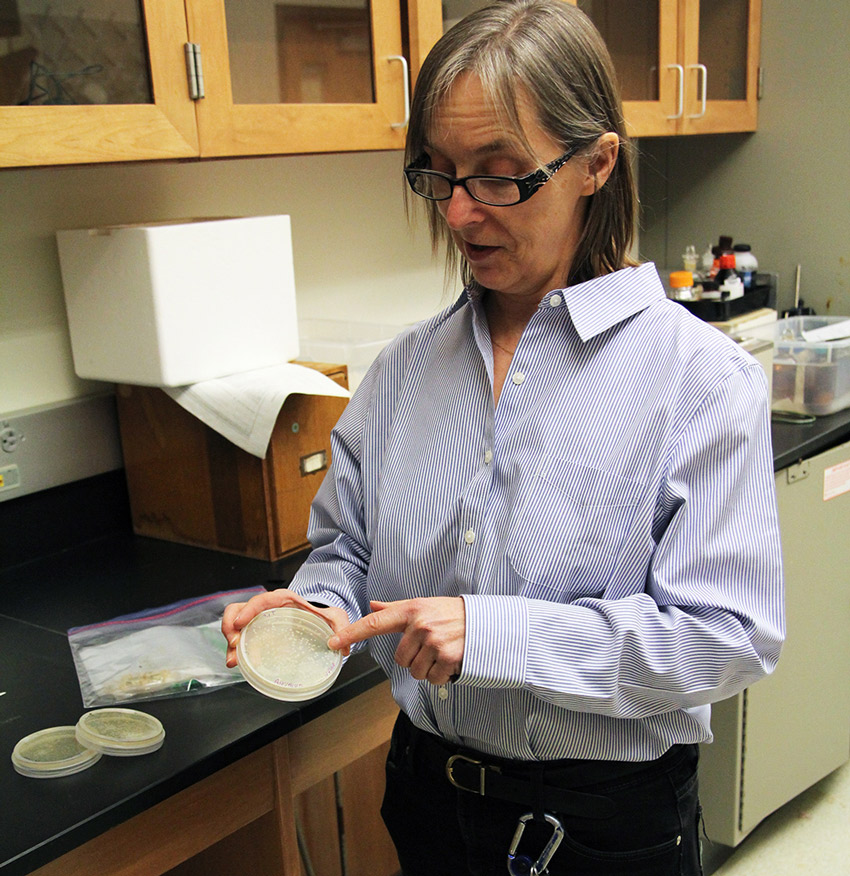- Apply
- Visit
- Request Info
- Give
Eastern Professors Use NASA Grant to Research Antimicrobial Resistance
Written by Jolene Potter
Published on February 27, 2018

Matthew Graham, a biology professor at Eastern Connecticut State University, is currently one of three university professors across Connecticut with a research grant from the NASA Connecticut Space Grant Consortium (CTSGC). Working closely with fellow biology professor Barbara Murdoch, their team is conducting a research project titled “Knock, Knock, Who’s There? A Diversity Discovery Mission of Unculturable Bacteria in Scorpions.”
Graham and Murdoch are testing bacteria naturally found in the abdomens of scorpions for their ability to produce new kinds of antibiotics. Their focus on finding new antibiotics is due to the rising threat of antimicrobial resistance, which is the ability of a microbe–such as a virus, bacterium or fungus–to be resistant to antibiotic drugs that had previously been useful in treating them.
Declared a “fundamental global threat to human life, food production, economic development and security” by the United Nations, there is an urgent need to discover new antibiotics that combat dangerous microbes that have developed resistance. “Each year, 25,000 Americans die because our current antibiotics cannot kill their infections,” said Murdoch. “Bacterial infections are a growing concern in space, too. As most antibiotics used today were isolated from bacteria, the discovery of new antibiotics requires the discovery of new bacteria.”
Graham and Murdoch hope to identify new bacteria from scorpions. One may wonder how studying bacteria in scorpions could facilitate the pursuit of new antibiotics. Interestingly, scorpions are an ancient lineage that have evolved alongside microbes and potential pathogens for several hundred million years. Murdoch points out that there is a possibility that scorpions have formed symbiotic relationships with bacteria that produce antibiotics to protect the scorpions. In a symbiotic relationship, two species live together. Many organisms are involved in symbiotic relationships, because this interaction provides benefits to both species.

The suite of microorganisms that live in and on scorpions is largely unknown, and surprisingly understudied, explained Graham. With a series of sophisticated molecular techniques performed by Eastern students, Graham and Murdoch hope their research will enhance the skill set and future opportunities for their students, and reveal “the collection of bacteria found in two different scorpion species, at a level of unprecedented detail,” said Graham.
“There is only a small portion of DNA we are interested in, and we use these molecular techniques to isolate and create millions of copies of this DNA to determine which bacterial species are present,” said Murdoch. The bacterial DNA is then sent to Harvard University for the final steps in the DNA sequencing process, where each individual letter forming the sequence is revealed. The resulting sequences determine what species are present, as “individual sequences of DNA are like the name tags, or barcodes, for each bacterial species.”
Graham and Murdoch then examine prior research literature to determine if the bacteria found in scorpions have been known to cause human illness or produce antibiotics. The research has implications for treating antimicrobial resistance on earth and in space.

Antimicrobial resistance contributes to NASA’s overarching goal of human space exploration because under microgravity conditions, bacteria are able to grow and evolve more quickly than they do under Earth’s gravitational conditions. Therefore, the development of new antibiotics that pathogens have not yet become resistant to is crucial to long-term manned space flight.
“The discovery of new antibiotics would benefit the medical community and space exploration,” writes the CTSGC, “seeing as antibiotic resistance increases under microgravity and human immune systems weaken during missions.”


